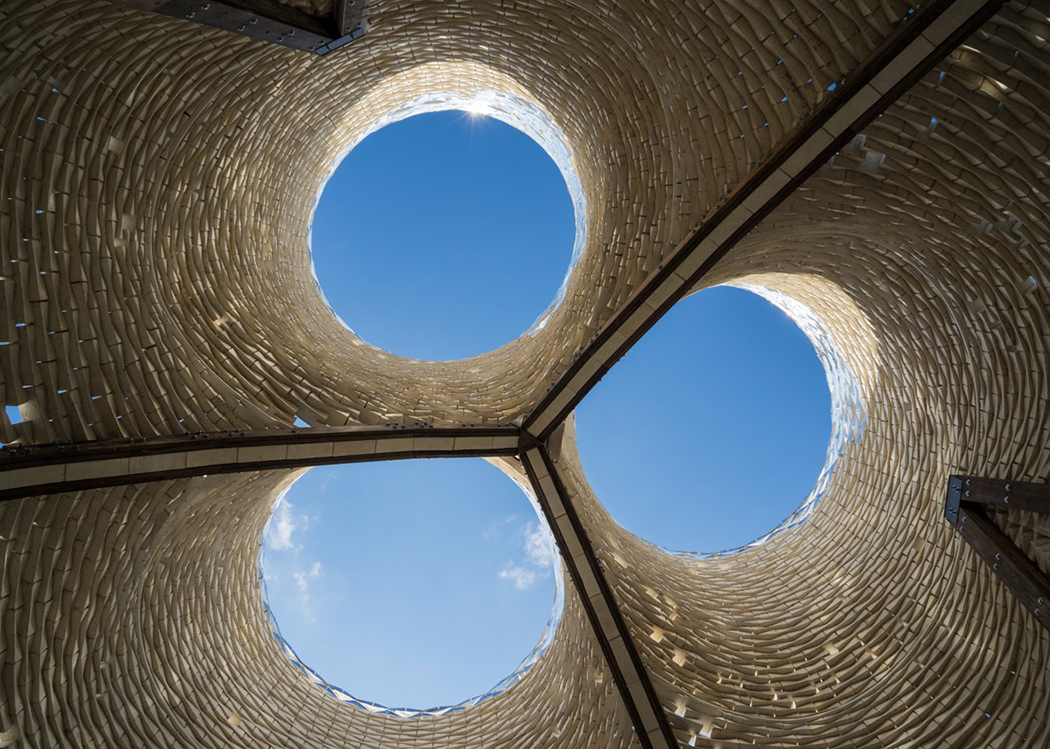David Benjamin’s recipe for construction materials sounds like witchcraft: Mix corn stalks with hemp and mushroom roots, pour the mixture into molds that resemble the shapes you need, and voilà, the building material will grow all by itself. In five days!
Simply put, this is the process of mycotecture, architecture with mushrooms.
Fungi and facades are unlikely friends architects usually prefer not to mention in the same breath. But Benjamin named his New York architecture firm The Living because he wants exactly that: to bring architecture alive, literally. “Biological systems are adaptable; they live, breathe and regenerate themselves,” he says in his office in the Brooklyn Navy Yard. “Imagine buildings had these traits! This would change our way of life radically.”
Maybe even more importantly, organic materials do not create trash. “Forty percent of the trash in our landfills is from construction,” notes Benjamin, who is also an architecture professor at Columbia. “We architects like to build for eternity, with steel and cement, but not all buildings need to last forever, and when we look at the landfills, we realize: Maybe we better look for materials which don’t sit in landfills for centuries and millennia.”
He integrates living organisms into his designs to create dynamic buildings that interact with their environment and leave a small CO2 footprint. His first foray into fungitecture together with the New York company Ecovative consisted of three towers, 13 meters high, that served as an event space at MOMA in 2014 and were entirely built from mycelium and hemp bricks. After three months, the towers were deconstructed and composted. In 2021, Benjamin built an arc for the Centre Pompidou in Paris for which he let mushrooms grow on hemp until the structure naturally fused together. Fuzzy cardboard-like clumps the size of ping-pong balls grown from hemp-fungi in his office are the last reminder of the perishable structure.
Admittedly, these projects served primarily to show the world that building with fungi was doable — the prototypes weren’t exactly move-in ready. This year, however, Benjamin will test the concept for the first time on a large scale and build a 300-unit affordable housing complex in Oakland, California. In partnership with Ecovative, the prefab company Factory OS, and the composite façade specialists at Kreysler and Associates, he wants to tackle one of the most urgent problems in the US: the housing crisis.
1
